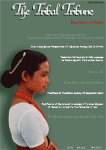Nature Talk
Ease of Doing Business And Tribal Population
In the ease of doing business ranking of Indian states1, undertaken by the World Bank Group and Confederation of Indian Industries, the top ten states include the states like Gujarat, Jharkhand, Chhatisgarh, Madhya Pradesh, Rajsthan, Odisha, Maharastra. These states have significant tribal population, that is the proportion in each of these states is higher than all India average (8.31%) whereas the total tribal population of these seven states alone constitutes 67.17% of the total tribal population of the country. Further, as per the backwardness classification of the states, undertaken by Raghuram Rajan Committee2 Jharkhand, Chhatisgarh, Madhya Pradesh, Rajsthan, Odisha are classified as the least developed states, Gujarat as less developed and Maharastra relatively developed state. It is thus a great spectacle to find that the least or less developed states with significant tribal population largely emerge as the most suitable places for ease of doing business.
But if, for the time being, the jargon ‘Ease of Doing Business’ is kept aside, and the history is peeped into, then it cannot be ignored that most of the mineral based industries and hydel power projects, largely in public sector, were set up in the tribal areas. Could this have been possible without a favourable environment for setting up business? But what were the consequences? The most visible consequence was large-scale displacement. Between 1951 and 1990, as per the Planning Commission Report, in the states of Andhra Pradesh, Bihar, Gujarat, Maharashtra, Madhya Pradesh, Rajasthan and Orissa, 21.3 million people were displaced out of which 8.54 million (40 per cent) were tribals and of those only 2.12 million (24.8 per cent) tribals could be resettled3. It may appear a strange coincidence that these very states, albeit in place of Bihar, Jharkhand and with Madhya Pradesh Chhatisgarh, currently figure in the list of top states for Ease of Doing Business. In these very ease of doing business states, as the Statistical Profile of Tribes in India 2013 and the Socio-Economic and Caste Census-2011 reveal, the proportion of rural tribal population below poverty line, in each state, is higher than all India average (47.4%) and the percentage of tribal population suffering deprivation in some form or other, in each state, is higher than 70%.
This being the condition of the tribal population, one wonders as to how these states emerge as the best states for doing business. May be to get over the abyss of poverty and deprivation among the tribal population, and the general identity of backwardness, the respective state governments, in their eagerness to be liberated from the epithet of ‘less developed’ or ‘least developed’, have probably thought that providing an environment of ease of doing business would push their states ahead, and bring about change in the condition of the tribal people.
But will the Ease of Doing Business in these significantly tribal states really transform the tribal lot?
The search for answer requires finding the objective behind this entire exercise of ranking the states on the ease of doing business.
World Bank-CII report, in its Executive Summary, unambiguously points towards the private sector as the real beneficiary of the Ease of Doing Business, when it states, ‘It is important to ensure that reforms are actually being felt by the beneficiaries, the private sector’ and provides in the last chapter of the Report ‘some suggestions on methods to engage the private sector.’(p.7). On the other hand, it is in another World Bank Report4, where the vulnerability of the tribal land to private transactions is highlighted on the basis of Planning Commission’s observation that the ‘non-tribal outsiders who converge into these areas corner both land and the new economic opportunities in commerce and petty industry.’ Is it then implied that in the states with significant tribal population, the Ease of Doing Business, which is primarily aimed to benefit the private sector, would make Living Life Hard for the tribal population? Or will the tribal people’s lot be worsened?
An apprehension does lurk, particularly in the background of the observation of High Level Committee5 on the surge in entry of the private corporations into the tribal areas in the last twenty years, during the Liberalization-Privatization-Globalization (LPG) regime, and as to how the ‘laws and rules that provide protection to tribes are being routinely manipulated and subverted to accommodate corporate interests’ (BKN)
- Assessment of State Implementation of Business Reforms, September 2015, World Bank Group and CII.
- https://in.finance.yahoo.com/news/simplified--raghuram-rajan-panel-report-on-state- backwardness-064423690
- http://planningcommission.nic.in/plans/planrel/fiveyr/10th/volume2/v2_ch4_2.pdf .
- Poverty and Social Exclusion in India, The World Bank, 2011, p.67
- Report of the High Level Committee on Socio-economic, Health, and Educational Status of Tribal Communities of India, , Ministry of Tribal Affairs, Government of India, May, 2014. p.31



